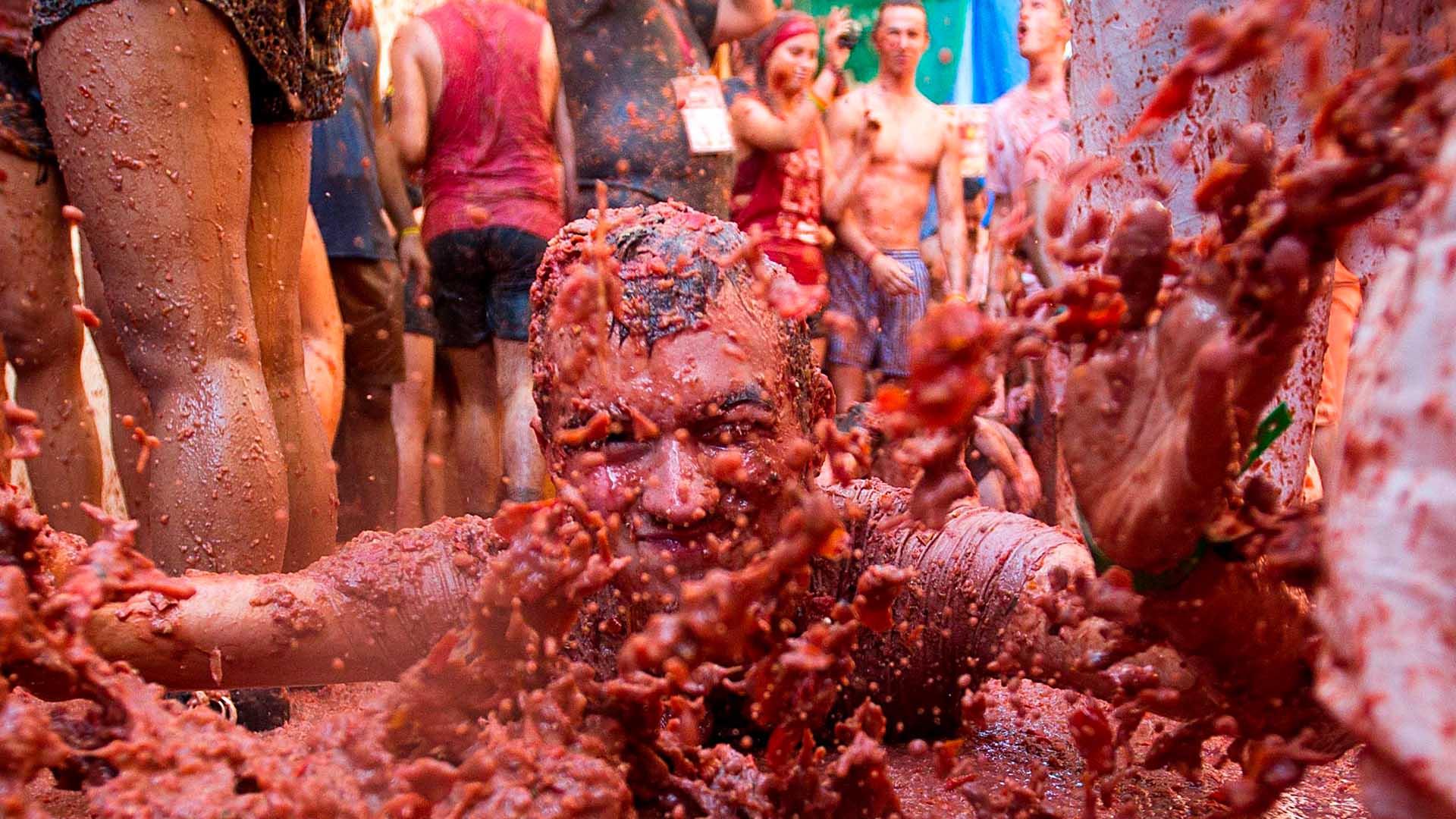Festivals are a great way to celebrate culture, traditions, and community. While most of us are familiar with popular festivals like Diwali, Christmas, and Carnival, there are several lesser-known festivals that are truly unique and unusual. From throwing tomatoes at each other to carrying giant wooden phalluses, here are the 10-15 most unusual festivals around the world.
La Tomatina – Bunol, Spain
La Tomatina is a festival where participants throw ripe tomatoes at each other. It takes place on the last Wednesday of August every year in the small town of Bunol, Spain. The festival has been held since 1945 and attracts thousands of tourists from all over the world.
Kanamara Matsuri – Kawasaki, Japan
Kanamara Matsuri, also known as the “Festival of the Steel Phallus,” is a celebration of fertility and reproduction. The festival takes place on the first Sunday of April every year in Kawasaki, Japan. Participants carry giant wooden phalluses through the streets to pray for good fortune and fertility.
El Colacho – Castrillo de Murcia, Spain
El Colacho, also known as the “Baby Jumping Festival,” is a strange festival that takes place in Castrillo de Murcia, Spain. Participants dress up in devil costumes and jump over babies born in the past year to cleanse them of sin and protect them from evil spirits.
Up Helly Aa – Lerwick, Scotland
Up Helly Aa is a fire festival that is celebrated annually in Lerwick, the capital city of the Shetland Islands in Scotland. The festival takes place on the last Tuesday of January and is a celebration of Shetland’s Viking heritage. The highlight of Up Helly Aa is the torchlit procession, where hundreds of costumed men, known as Guizers, march through the streets of Lerwick carrying flaming torches. The Guizers wear traditional Viking costumes and carry shields, axes, and spears, evoking the Viking raids of the past.
Dia de los Muertos – Mexico
Dia de los Muertos, or Day of the Dead, is a Mexican holiday that takes place on November 1st and 2nd. It is a celebration of deceased loved ones and involves the creation of altars, parades, and traditional foods.
Boryeong Mud Festival – Boryeong, South Korea
Boryeong Mud Festival is a festival that takes place in Boryeong, South Korea, every year in July. Participants cover themselves in mud and enjoy mud wrestling, mud sliding, and mud painting.
Hadaka Matsuri – Okayama, Japan
Hadaka Matsuri, also known as the “Naked Festival,” is a Japanese festival that takes place in Okayama, Japan, every year in February. Participants wear only a loincloth and battle for a sacred stick called the shingle, which is believed to bring good luck.
Songkran – Thailand
Songkran is a Thai New Year festival that is celebrated every year from April 13th to April 15th. Also known as the “Water Festival,” Songkran is the world’s largest water fight, where participants splash water on each other to wash away bad luck and welcome the new year.
Monkey Buffet Festival – Lopburi, Thailand
The Monkey Buffet Festival is a unique festival that takes place in Lopburi, Thailand, every year in November. The festival is dedicated to the monkeys that inhabit the city and involves offering them a grand feast of fruits, vegetables, and other treats.
Holi – India
Holi is a Hindu festival that is celebrated in India and Nepal, and in many parts of the world by the Indian diaspora. The festival is also known as the “Festival of Colors” or the “Festival of Love,” and is usually held in March. Holi celebrates the arrival of spring and the victory of good over evil. The festival is marked by people smearing each other with coloured powders and water, singing and dancing, and sharing sweets and food.
Inti Raymi – Cusco, Peru
Inti Raymi is a traditional Inca festival that is celebrated in Cusco, Peru, every year on June 24th. The festival honours the Inca sun god Inti and is one of the most significant celebrations of the Andean culture. Inti Raymi, which means “Festival of the Sun” in Quechua, involves a procession of colourful costumes and elaborate dances. The highlight of the festival is the reenactment of the ancient Inca ceremony that took place at the Temple of the Sun, which was the most important religious site in the Inca Empire.
Thaipusam – Malaysia
Thaipusam is a Hindu festival that takes place in Malaysia, Singapore, and other countries with significant Tamil populations. It is a festival of devotion where participants pierce their bodies with hooks and skewers and carry Kavadis (ornate, decorated frames) to honour Lord Murugan.
Yuki Matsuri – Sapporo, Japan
Yuki Matsuri, or the Snow Festival, is a winter festival that takes place in Sapporo, Japan, every year in February. The festival features incredible ice sculptures and attracts millions of visitors from around the world.
Semana Santa – Seville, Spain
Semana Santa, or Holy Week, is a Catholic festival that takes place in Seville, Spain, every year in April. The festival involves processions of religious floats and statues, as well as the wearing of traditional hooded costumes.
The Cheese Rolling Festival – Gloucester, England
The Cheese Rolling Festival is a unique festival that takes place in Gloucester, England, every year in May. Participants race down a steep hill to catch a wheel of cheese that is rolled down the hill. The first person to cross the finish line with the cheese wins.
The Takeaway
These unusual festivals around the world are a testament to the diversity and richness of global cultures. They offer a unique glimpse into the customs and traditions of different communities and showcase the creativity and ingenuity of human beings. If you ever get a chance to attend one of these festivals, be sure to take the opportunity and enjoy the experience!
Attending these festivals can be a life-changing experience. This allows one to immerse oneself in a different culture, interact with locals, and learn about the history and heritage of a particular region. These festivals also promote cultural understanding and appreciation, fostering a sense of unity and connection among people from different backgrounds.

